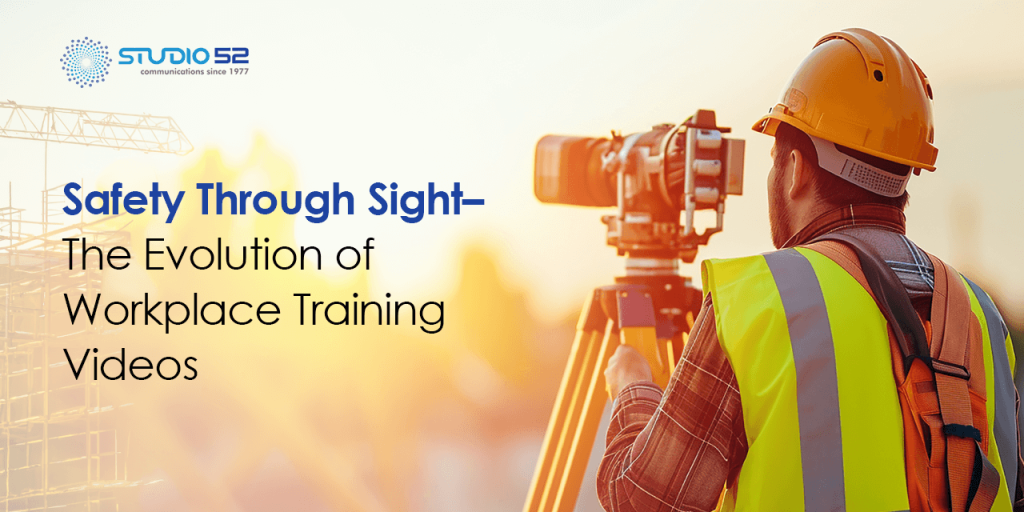Workplace safety remains a paramount concern in today’s fast-paced industrial landscape, with the potential for accidents and injuries casting a shadow over every operation. Shockingly, recent statistics reveal that workplace accidents cost businesses billions annually, not to mention the immeasurable toll on human lives and well-being. Against this backdrop of risk and uncertainty, employers are grappling with the challenge of ensuring the safety and security of their workforce amidst ever-evolving hazards and regulatory pressures.
In this dynamic environment, traditional safety training methods are proving inadequate, unable to address modern workplaces’ diverse needs and complexities. Employees face many risks from manufacturing plants to construction sites, ranging from chemical exposures to ergonomic strains, underscoring the urgent need for innovative and effective training solutions. Within this context, the emergence of safety training videos assumes paramount importance, offering a compelling and immersive approach to educating and empowering employees to navigate the hazards of their respective industries.
Understanding Workplace Safety Needs
Across industries, workplace safety is not just a regulatory requirement but a moral imperative. Employees face many risks daily, from construction sites to corporate offices, from physical hazards to ergonomic challenges. Understanding these diverse safety needs is crucial for developing effective training strategies that resonate with employees at all levels.
Regulatory bodies have laid down stringent standards to safeguard employee well-being, mandating comprehensive safety training programs for employers. Compliance with these regulations mitigates legal risks and fosters a culture of safety within organisations.
Advantages of Safety Videos
Research indicates that humans retain information better when presented in a visual format, with visuals stimulating up to 80% of long-term memory recall. By leveraging this innate preference for visuals, safety videos engage employees deeper, enhancing knowledge retention and behaviour change.
Here are some more advantages of Safety Videos:
- Consistent Message Delivery:
Ensures uniform dissemination of safety protocols to all employees.
Standardised training across different locations and languages.
- Enhanced Retention and Engagement:
Utilises visual storytelling to captivate and educate employees effectively.
Stimulates up to 80% of long-term memory recall, improving knowledge retention.
- Accessibility and Flexibility:
Enables on-demand access to training materials from anywhere, at any time.
Accommodates diverse learning styles and schedules, fostering inclusivity.
- Cost-Effective Training Solution:
Reduces the need for expensive in-person training sessions.
Minimises downtime by allowing employees to access training remotely.
- Trackable Metrics and Data Insights:
Provides valuable analytics on engagement rates, completion rates, and incident data.
Enables continuous improvement through data-driven decision-making.
Key Elements of Effective Safety Videos
The success of a safety video hinges on its ability to captivate and educate viewers effectively. Several key elements must be incorporated into the production process to achieve this:
Engaging Content:
- Incorporates humour, interactions, and real-life scenarios to resonate with viewers.
- Captivates the audience’s attention and maintains interest throughout the video.
Clear Communication:
- Conveys safety procedures concisely and comprehensively, avoiding technical jargon.
- Ensures information accessibility for employees of all backgrounds and skill levels.
Visual Appeal:
- Utilizes high-quality visuals and graphics to enhance understanding and retention.
- Leverages the power of visual storytelling to convey complex concepts effectively.
Interactive Features:
- Incorporates interactive elements such as quizzes and simulations for active learning.
- Engages viewers through gamification and encourages participation.
Customization and Personalization:
- Tailors content to address industry-specific risks and challenges.
- Adapts training materials to accommodate diverse workforce demographics and learning preferences.
Tailoring Videos to Industry Specifics
While the overarching principles of safety remain consistent across industries, each sector has unique risks and challenges. Therefore, it’s imperative to effectively tailor safety videos to address industry-specific concerns. Whether it’s the high-risk environments of construction sites or the chemical hazards in manufacturing facilities, safety videos must cater to the specific needs of each industry.
This customization extends beyond content to encompass language and cultural considerations as well. By acknowledging and accommodating employees’ diverse backgrounds, safety videos can bridge communication gaps and foster inclusivity within the workforce.
Technological Innovations for Interactive Learning
As technology advances so does the potential for interactive learning experiences. Virtual reality (VR) and augmented reality (AR) applications are revolutionising safety training by providing immersive simulations of real-world scenarios. Through these simulations, employees can practise safety protocols in a risk-free environment, enhancing their preparedness for on-the-job challenges.
Additionally, gamification has emerged as a powerful tool for increasing engagement and motivation in safety training. By incorporating elements of competition and reward, gamified safety videos transform learning into a captivating and enjoyable experience.
Distribution and Accessibility
With the advent of the digital age, the distribution of safety videos has never been easier or more accessible. With the proliferation of online platforms and mobile devices, employers can disseminate training materials to employees worldwide with just a few clicks. This accessibility ensures that all employees, whether on-site or remote, have access to vital safety information whenever they need it.
Furthermore, advancements in accessibility features, such as closed captioning and audio descriptions, ensure that safety videos are inclusive to employees with disabilities. By prioritising accessibility, employers demonstrate their commitment to creating an inclusive and equitable workplace for all.
Measuring Impact and Overcoming Challenges
While the benefits of safety videos are undeniable, measuring their impact requires diligent monitoring and evaluation. Tracking metrics such as engagement rates, completion rates, and incident data provides valuable insights into the effectiveness of safety training programs. By analysing this data, employers can identify areas for improvement and refine their training strategies accordingly.
However, implementing safety videos is not without its challenges. Resistance to change within the industry, budget constraints, and resource allocation are common barriers that employers may encounter. Overcoming these challenges requires strong leadership, effective communication, and a commitment to prioritising employee safety.
Learn more about what sets a safety video apart with the 7 Best Workplace Safety Videos: To Inspire Safety at Work
Future Trends in Safety Videos
The future of safety videos is bright, with exciting innovations on the horizon. Integrating artificial intelligence (AI) for personalised learning promises to revolutionise safety training by delivering tailored content based on individual employee needs and preferences. Furthermore, data analytics will enable continuous improvement by providing actionable insights into training effectiveness and areas for enhancement.
As technology continues to evolve, so will the potential for safety videos to transform workplace training. By embracing these advancements and staying ahead of the curve, employers can ensure a safer and more resilient workforce for the future.
Conclusion
In conclusion, safety videos represent a paradigm shift in workplace training, offering a dynamic and engaging approach to employee education. From their ability to convey complex information visually to their potential for immersive learning experiences, safety videos are redefining the way organisations approach safety training.
As we navigate an increasingly complex and challenging work environment, investing in safety videos is a legal and strategic obligation. By prioritising employee safety and well-being, employers not only safeguard their workforce, but also promote excellence and innovation that sets them apart in the marketplace.
Studio 52, the leading video production house in the GCC, specialises in the production of safety videos. What sets us apart is our assurance to incorporate the latest industry trends and deliver exceptional quality videos despite the stringent deadlines. We provide end-to-end support from consultation to scripting, shooting, editing, multilingual voice overs, and safety training for your employees.
To know more, visit our website or book a free consultation call with our experts today!





